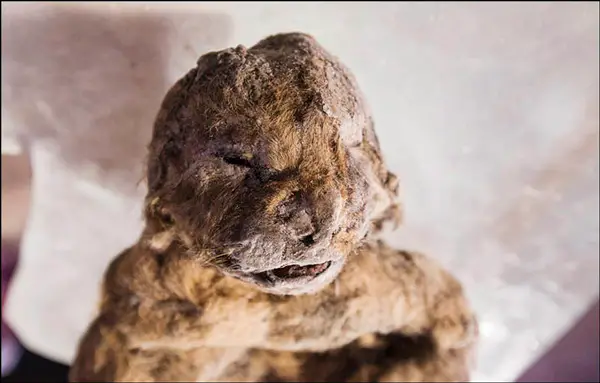Ever wondered how a creature that walked the earth more than 12, 500 years ago looked like? There was a pretty controversial discovery in Russia just last year that grabbed the curiosity of most scientists. What would you think if you found out that scientists and doctors are working together to produce a creature that lived a decades ago? That they will try to found out what characteristics that creature has that differs them to the creatures we see now?
 |
| Picture Credit: Vera Salnitskaya |
Two newborn prehistoric big cats, dating from the Pleistocene times, were found in a ‘sensational’ discovery last year, as imparted by the Siberian Times. Dr. Albert Protopopov, the head of the Department of Mammoth Fauna Studies in Yakutsk, Russia, was astounded by the discovery. The two cubs were dug in their icy grave with all of their body parts complete: fur, eyes, ears, soft tissue, even their whiskers were still there.
South Korean cloning expert Hwang Woo–suk, went to Yakutsk to obtain samples of the ancient lion in order for them to extract tissue, skin, and muscle for the DNA. Hwang Woo-suk is also currently working on bringing a Woolly Mammoth back to life; he is the one pioneering the research and now an extinct lion was added to his list.
Dr. Protopopov’s words: ‘Together with the Mammoth Museum, we took samples for cell research.’ The museum’s experts will study these for the presence of living cells suitable for cloning. Dr. Hwang came to Yakutsk only for the reason; to get samples to be derived and for them to get substances suitable for cloning. There was a slight misunderstanding however; Professor Hwang wanted a large section of the cub (a part of the skull, or a leg but this was not admired by the local experts who are suppressing one of the cubs for any kind of research. Uyan – the one who has been preserved better than the other cub; scientists are more confident that cloning or any type of research will be better in the hands of future technology and are ensured that will yield better and greater results than if it is done now.
The Russian doctor also said that they intend to keep it for the future because methods of research are being improved for at least once a decade and that there is a mini-revolution in this area. They will do everything possible to keep the corpse as frozen as long as possible. Seymon Grigoriev, Director of the Mammoth Museum, said that the Koreans were not happy with the samples they have taken as they were expecting more. They expected that they will get a lot of tissue like they did with the mammoth previously but it would not work with these kittens.
The cubs were found somewhere around 650 miles northeast of Yakutsk in Yakutia which is also known as the Sakha Republic in Russia. Dr. Protopopov said that when they showed it to the media last year, it was very small, probably about a week or two old because the eyes are yet to open and baby teeth that haven’t grown completely. They think that the cubs died because the lioness (their mother) hid them from predators and a landslide occurred which covered them and remained enveloped in permafrost. The air intake was also blocked which helped a lot in the preservation.
In summer 2016, researchers and scientists ought to go back to search for one more cub or the lioness, if possible. Further research will continue as to why and how these cubs died more than 10, 000 years ago since lions only have a few predators. One good theory is a decline in deer and cave bears, caused their demise.
What do you think about this astonishing discovery? Stay tuned for updates on how these cubs died, what they would do about the cloning, and what discoveries scientists will get after this.